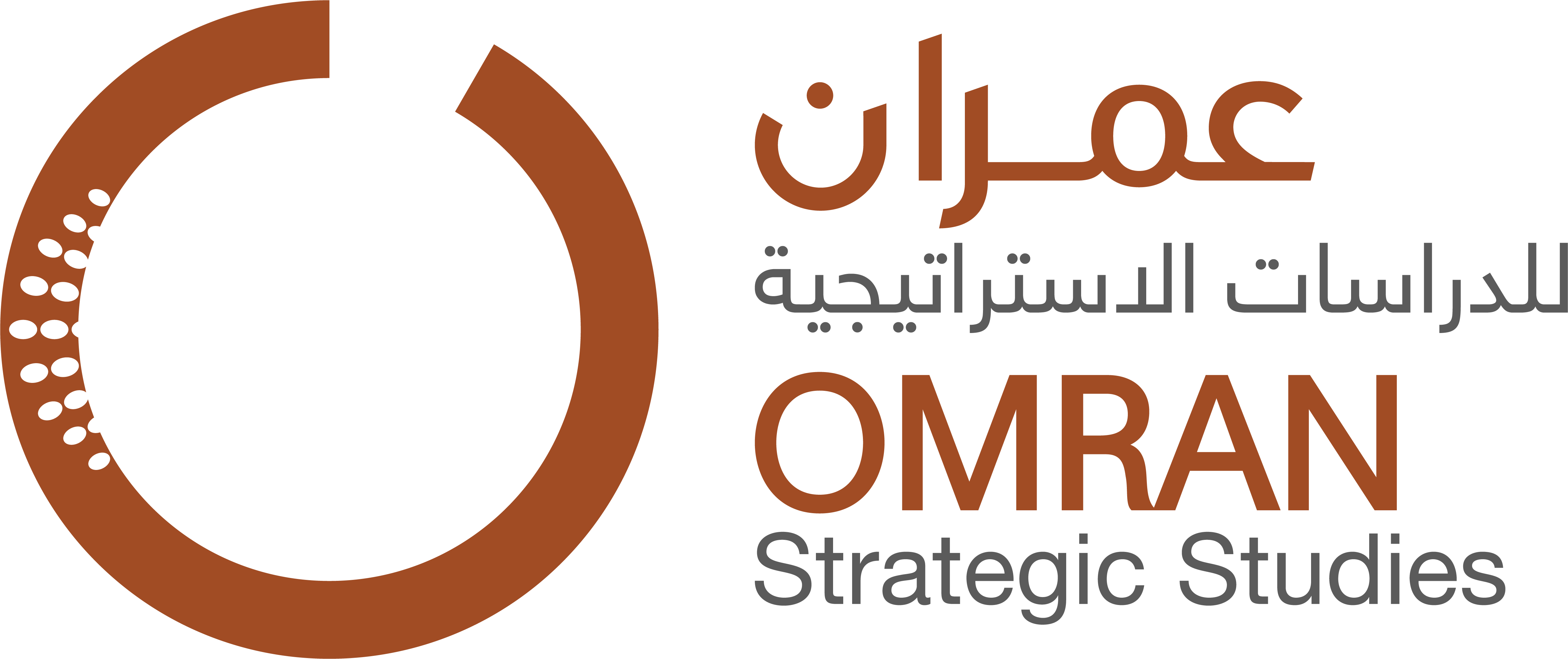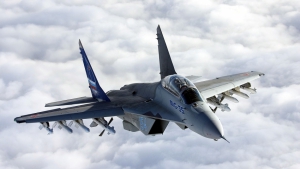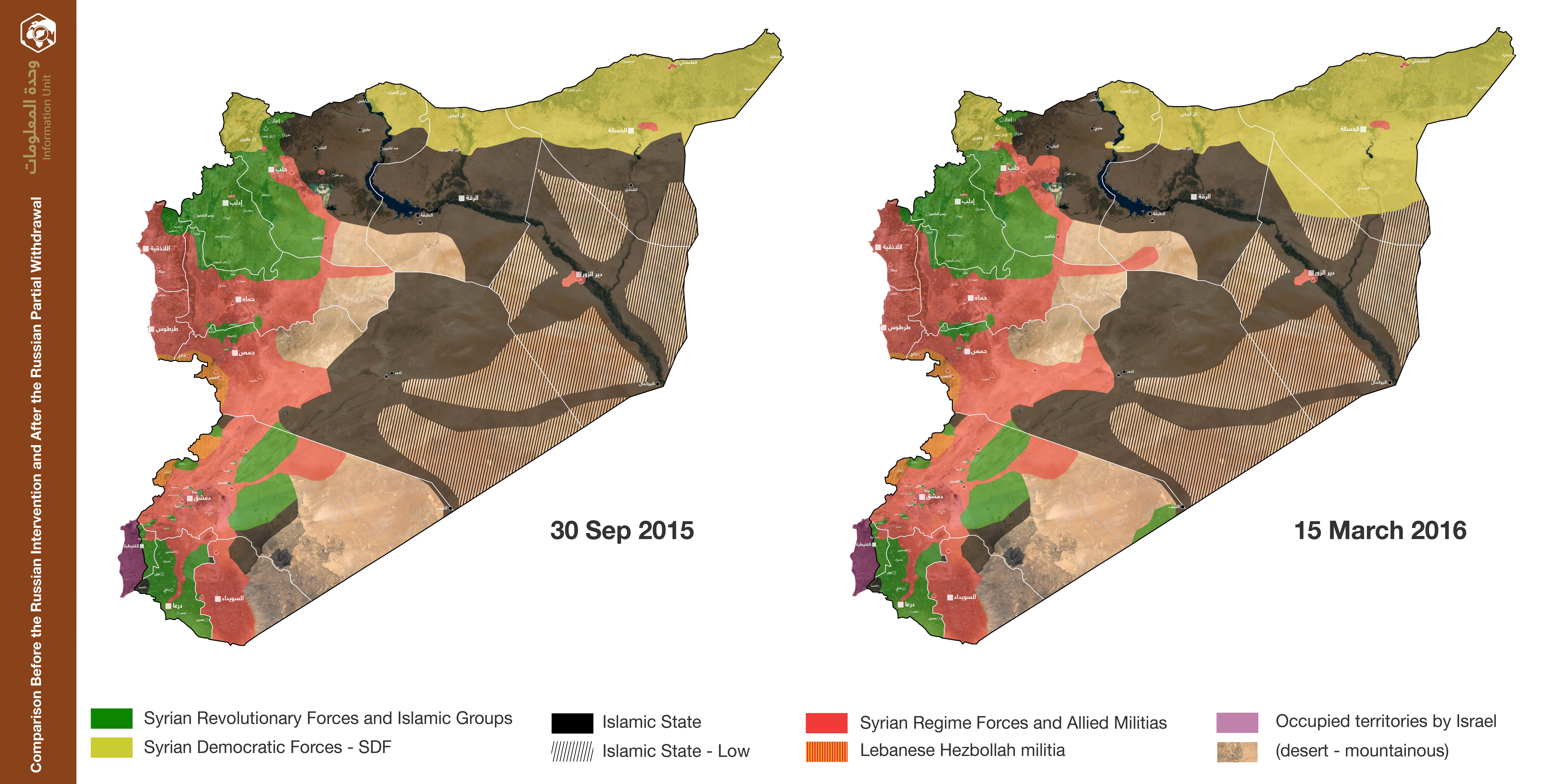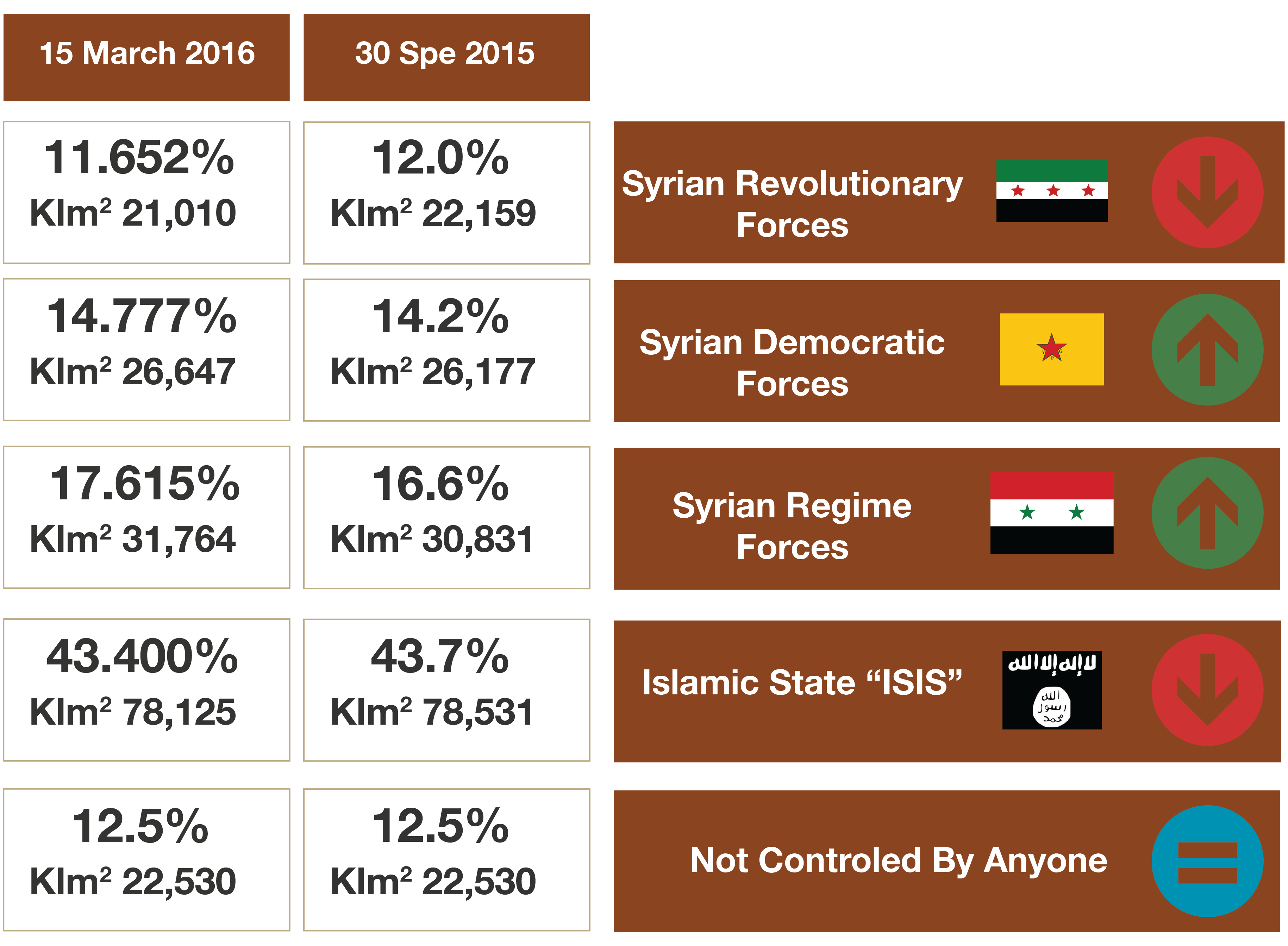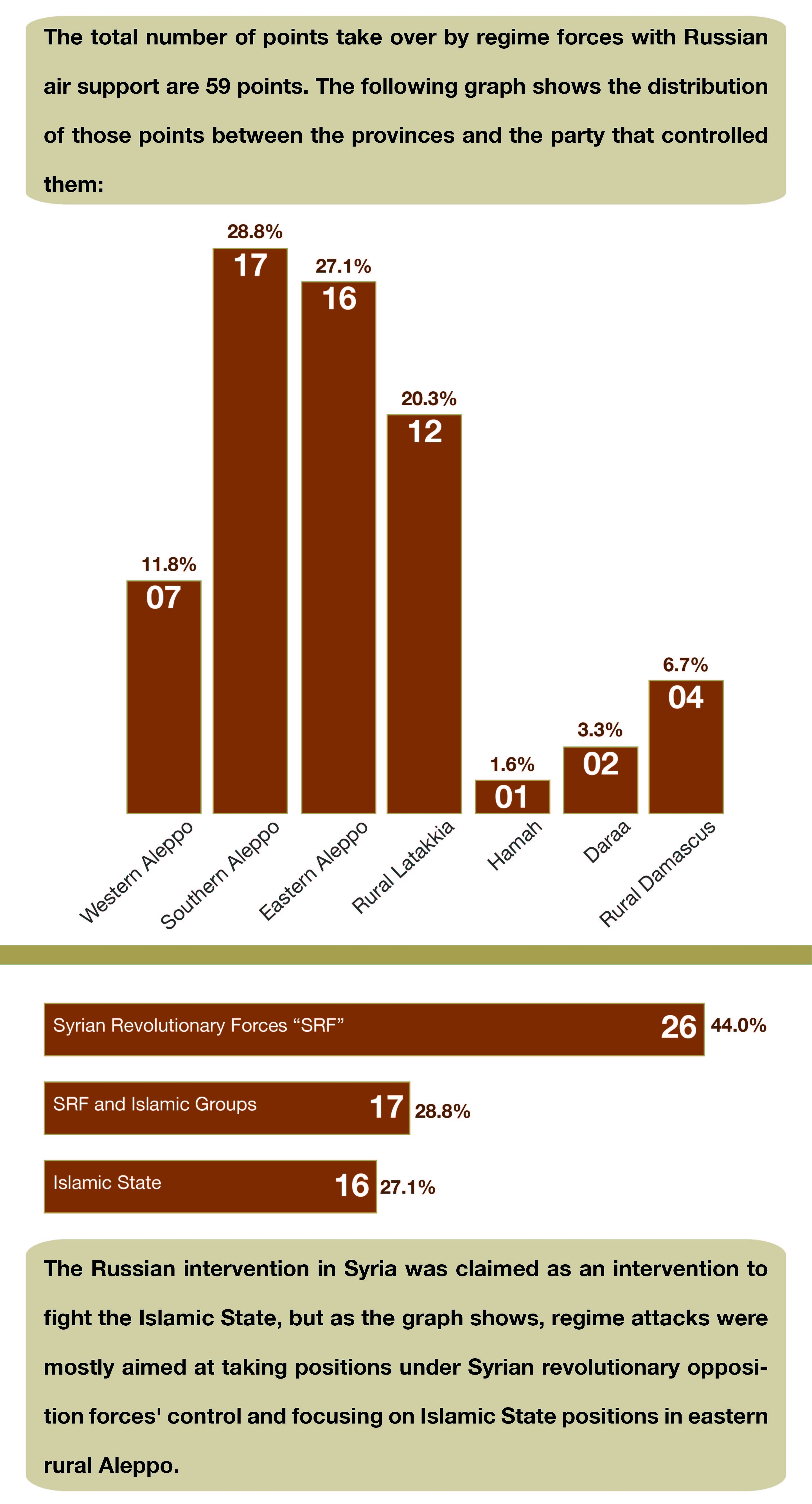Five Months of Russian Presence in Syria
Introduction
Russia announced the start of its Syria operations on September 30 2015 after Syrian President Bashar Al Assad requested Russian military assistance from Moscow and the Russian Federation’s parliament gave permission to Russian President Vladimir Putin to use Russian military forces outside Russia’s borders. The Russian airstrikes followed a period of public military support to the regime and the announcement of the formation of an intelligence-sharing center that included Russia, Iran, Iraq and Syria with the announced mission of fighting the Islamic State. The first Russian airstrikes took place on September 30, 2015 targeting Islamic State positions in Homs according to the Russian Ministry of Defense. However, those positions were actually 50 kilometers away from the closest Islamic State positions. Instead, the first Russian airstrikes concentrated on Syrian revolutionary opposition targets in northern rural Homs and Hama in which mostly civilians were killed or injured.
Territory Control Map - Comparison before the Russian Intervention and After the Partial Withdrawal
The Russian intervention came at a critical time for the regime since it was suffering severe losses in favor of the Syrian revolutionary opposition forces. This period had the potential of developing into a game changer for the entire Syrian military situation and in the history of the Syrian revolution if it were not for the differences that arose between the Syrian revolutionary opposition forces on one hand and the differences between the Syrian Islamist forces on the other. At the same time, regime forces were engaged in skirmishes in western rural Homs and southern rural Homs.
- The Regime and Syrian Opposition Forces
Regime ground troops and supporting Shiite militias were advancing on certain fronts controlled by Syrian revolutionary opposition forces in southern Rural Aleppo, western rural Aleppo, and rural Lattakia. However, the regime failed to make any significant advances in southern rural Aleppo, western rural Aleppo, and rural Lattakia. The most significant regime victories in Syrian revolutionary opposition controlled areas were breaking the siege on the towns of Nubul and Zahraa in northwestern rural Aleppo and preparations for future significant advances in rural Lattakia - Salma, Rabia, and Kansabba. - The Regime and the Islamic State
Regime forces made significant advances in eastern rural Aleppo breaking the siege on Kweires Airport that was previously under Islamic State control. Regime forces also made significant advances in eastern rural Homs reaching closing in on Palmyra City reaching a distance of only 2 kilometers away. - Syrian Democratic Forces and Indirect Benefits
The Syrian Democratic Forces receive a large amount of support from international anti ISIS coalition member states. However, this does not stop Russia from providing indirect support to Syrian Democratic Forces. While the regime and Russian forces conducted attacks on western rural Aleppo, SDF took the opportunity to take positions that were previously under Syrian revolutionary opposition control: Tal Rifaat, Mineg, Maer, Kifeen, Ihris, Deir Jmal, and Al Ziyara.
Regime Benefits from Russian Military Support from the Start of the Intervention to the Partial Withdrawal
Russian Achievements from Russian Military Presence in Syria
- Creating a no flight/no access or a “no fly zone” type area over nearly all Syrian territory forcing any anti-Islamic State coalition forces to coordinate directly with Russia since the Russian “Richag – AV” electronic warfare system was deployed on the ground in Syria and on some Russian military aircrafts. This radar system has capacity to jam signals, block communications between electronic communication devices, and even jam cruise missile systems such as the Patriot system that USA pulled out of Turkey just before the Russian intervention.
- Russia sent its 11 ton Moskva missile cruiser to the Syrian coast landing at a port near Lattakia and carrying the Russian S300 ballistic missile air defense system that gives Russia a tactical advantage over other regional actors since Russia could now respond to any threats over the entirety of Syria and 50% of the Black Sea. The ship and the missiles remained in position despite Russian withdrawal from Syria.
- Russia provided a large amount of ammunition, supplies, technicians, trainers and advisors the Syrian regime’s military.
Strengthening regime military posture and defenses in areas the regime has called “Beneficial Syria” and securing a strong lone of defense for stretching from the northern to the southern coastal areas and establishing forward operating front in Syrian opposition areas, especially in the desert areas southeast of Homs towards Palmyra. - Russia ensure the protection of its strategic and business interests including its military presence in a number of bases in Syria as well as its business interests in providing technical expertise to active oil and gas projects in Syria.
